How to propagate geraniums correctly?
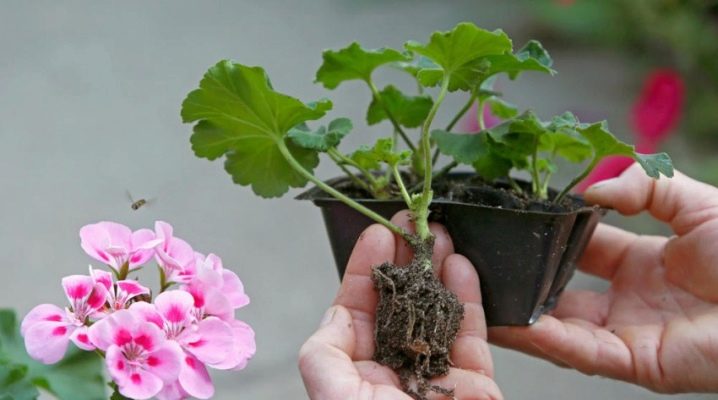
Geranium is probably the most common plant familiar from childhood, which never ceases to amaze, there are so many of its varieties, types and colors. Despite this, geraniums are simple and unpretentious to care for, easy to reproduce at home.
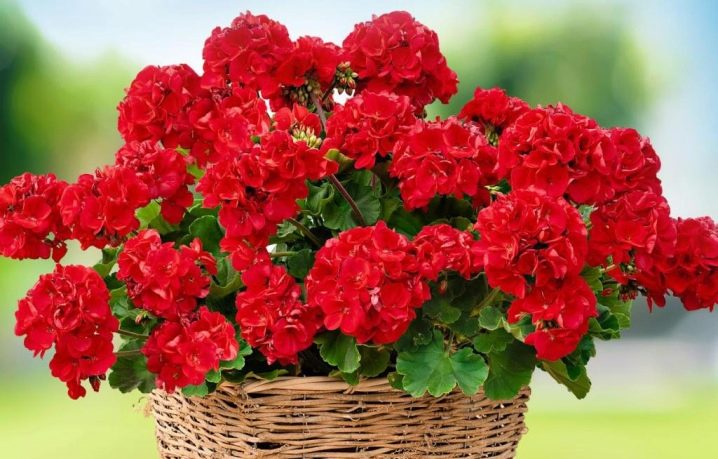
Breeding features
Geranium is best propagated in the spring, when all plants, regardless of whether they are indoor or outdoor, wake up from hibernation. Active sap flow begins, daylight hours increase, and flowers easily start growing. The best time for grafting is March, April. Geranium cuttings rooted in spring quickly build up the root system and delight with their flowering in about a month. Even a novice florist will be able to grow geraniums.
House flowers or a stalk taken from a friend usually takes root without problems.
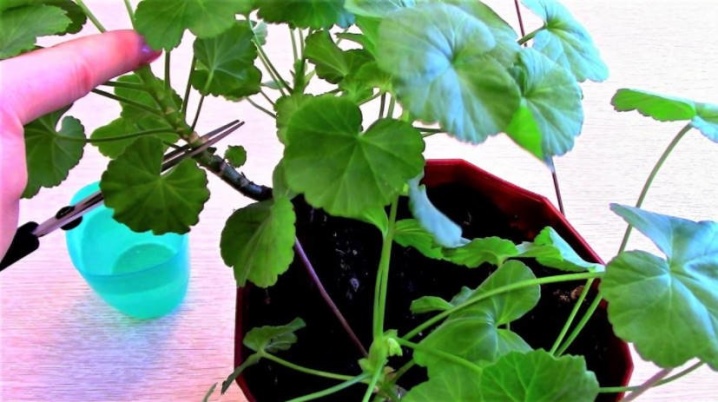
Unsuccessful cuttings can be comprehended if attempts were made to root imported plants.... For long-term transportation and active pre-sale flowering, they are saturated with special chemicals that make the plant almost sterile, unable to reproduce vegetatively.
By gradually nursing such a plant, it can be tamed. After about a year of home, and not industrial care, you can try to do their reproduction.
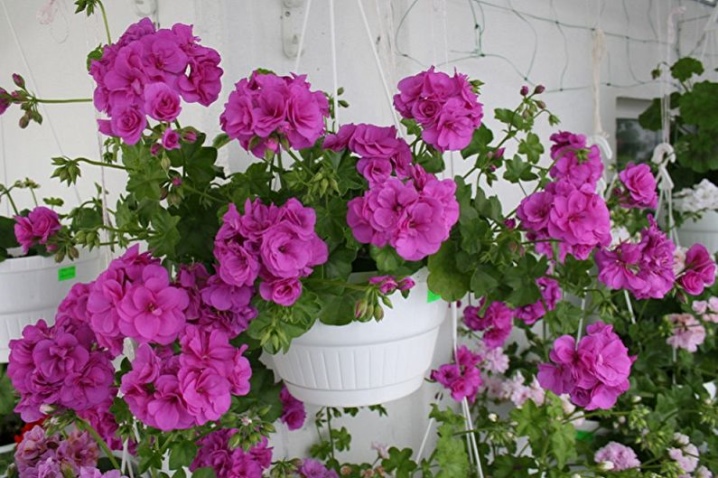
Preparation
Before planting the cuttings of geraniums, it is recommended to stand for 2-3 hours in a solution of "Heteroauxin" or any other growth stimulator. From home remedies, aloe juice diluted 1: 1 has been successfully used. You can use "Kornevin" by simply dipping the end of the cutting into powder. The smallest particles stick to the wet surface of the stem, without shaking them off, plant the cutting in the prepared soil.
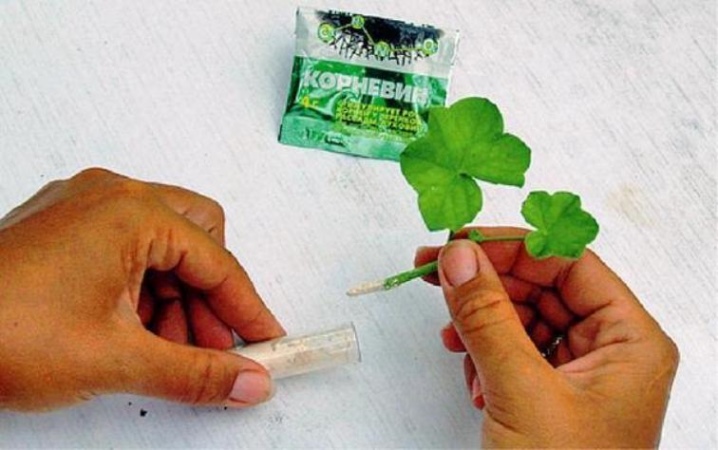
For planting a geranium shoot without roots use a special earthen substrate. It is desirable that it consists of peat, leafy earth and coarse sand... The container with drainage holes is filled to 1/4 of the height with expanded clay and 2/4 with the prepared substrate. The earth is well spilled with a weak solution of potassium permanganate.
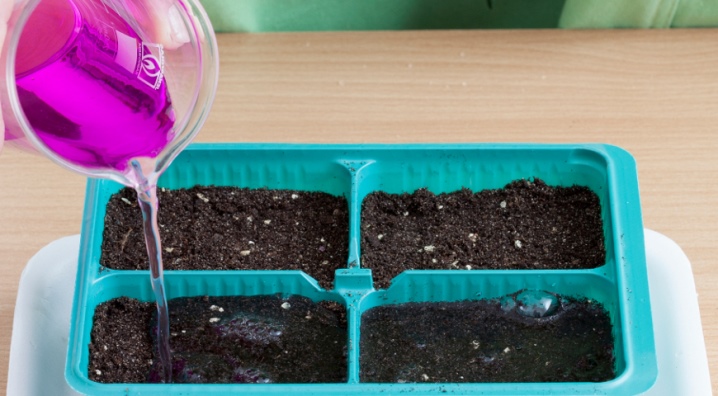
Then, when the excess water ends up in the pan, and the earth settles a little, you can add the substrate.
We place the stalk in the prepared moist soil, immersing it by about 2 centimeters.Thus, the tip of the appendix will be in a humid environment, and the stem itself will be in a drier earthen mixture. This will minimize the risks of decay at the initial stage of rooting. The earth needs to be tamped a little, sprayed with a sprayer and covered with a bag.
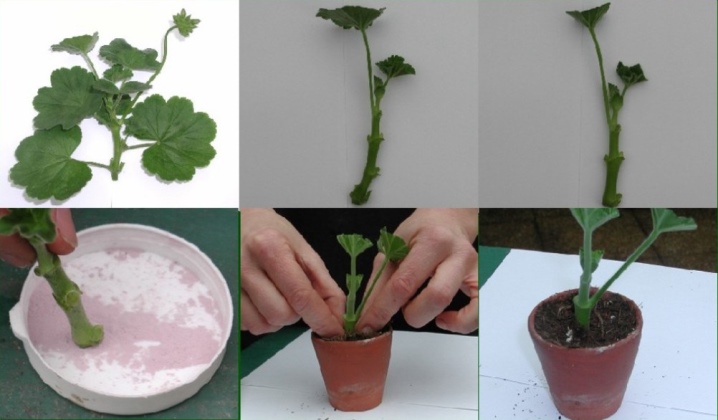
The ways
Geranium reproduces in several vegetative ways. Breeding by cuttings has one major advantage - the preservation of all maternal qualities. In springtime, this happens quite easily and quickly.
Cuttings
Cuttings can be stem, root, or leaf.
Soft geranium leaves usually do not cut, but the stems and roots lend themselves well to this method.
Root
During the dormant period, the mother plant is carefully dug up and freed from the ground. The aboveground parts are removed so that all the plant's forces are concentrated on rooting. Then the plant is divided, if necessary, you can use a sharp knife. The cut is processed with a solution of potassium permanganate, you can sprinkle it with charcoal.

Stem
If necessary, propagate geranium by stem cuttings, a part of the stem with two or three buds is used. Usually, one-year, elongated shoots are used.
A prerequisite is that the shoot must be absolutely healthy.
The lower horizontal incision is made about half a centimeter below the kidney. Leaves on a prepared cutting can be cut or removed altogether.

For germination of harvested geranium babies, it is necessary to take a loose earthen substrate with a high content of river sand.
It is advisable to disinfect it with fungicide solutions before planting in order to prevent possible infection or putrefactive processes.
Of course, it is necessary to create optimal conditions for germination - these are high humidity, sufficient illumination and favorable temperature indicators.

Rooting will be faster if the bowl with the geranium stalk is placed in a mini-greenhouse - a plastic bag or an inverted glass jar.
Moderate watering is recommended, since there are no roots yet, and excess moisture can cause acidification of the soil or rotting of the cuttings.
As necessary, it is necessary to spray the plantings, opening and airing the greenhouse. For a successful landing under the open sky, it is necessary to wait for a stable warm temperature, when the threat of return frosts has passed.
Although geranium easily tolerates transplanting, and practically does not get sick, it is correct to plant it using the so-called "transshipment method".
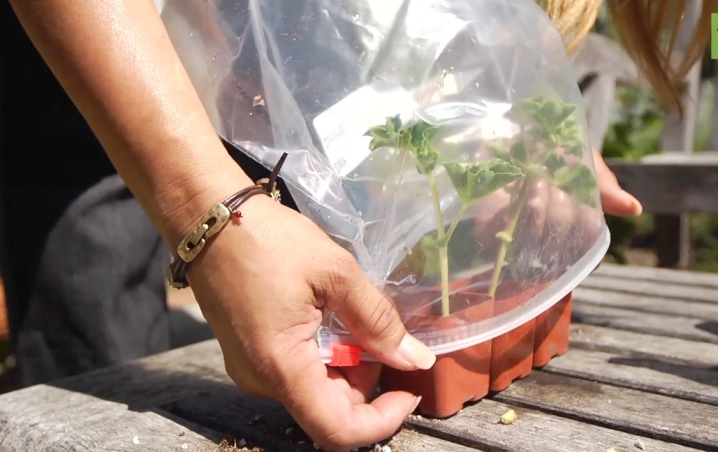
Sheet
In order to breed geraniums, you can even use a leaf. This method is rarely used, since it has less chance of success, but subject to all agrotechnical subtleties, it has the right to be used by hardworking florists.
Just do not forget that the leaf plate must be necessarily with a part of the stem of at least 3 centimeters.
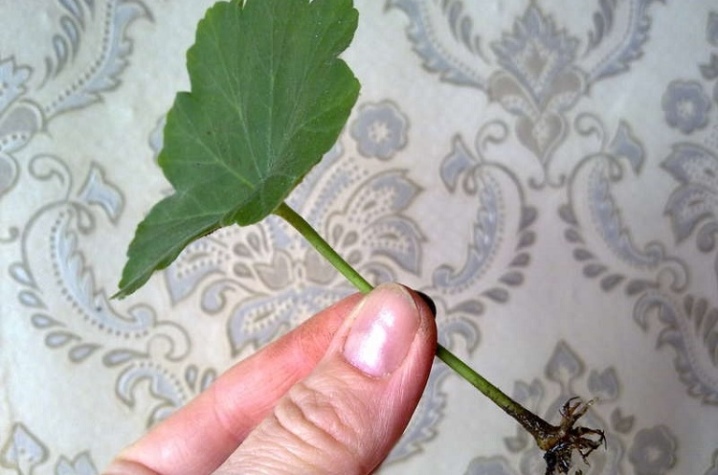
The leaf used for breeding is best taken from a healthy strong plant from the bottom of the stem. Before planting, the leaf must be saturated with moisture, so it is placed in a glass of water for a week.
To speed up the process, many add plant hormones to the water.
A week later, the leaf is placed in the earthen substrate with the handle down, immersing it with a small part of the plate. The ground is slightly crushed around the planting leaf, sprayed and covered with film. Care must be taken that the edges of the glass or film do not touch the cuttings. The planting container is placed in a warm, shaded place. The film cover is regularly removed for ventilation and spraying.
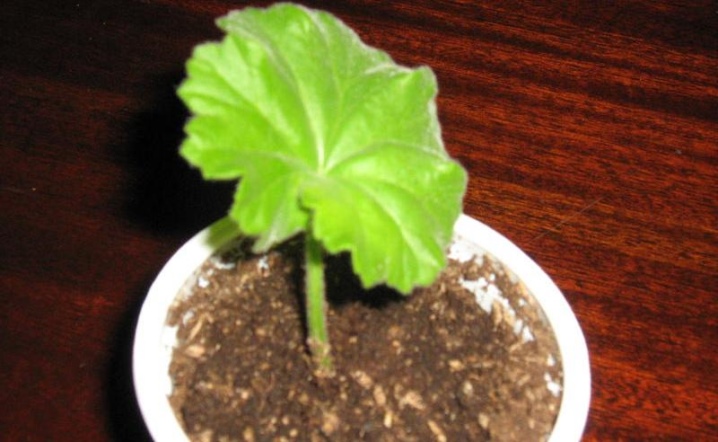
Seeds
Geranium reproduces wonderfully by seeds. This is easy, fast, even a beginner can handle it. With this method, there is still one, but significant disadvantage. When planting with seeds, nature does not guarantee the transfer of maternal qualities, such as, for example, the variegation or doubleness of the flower.
Therefore, the more valuable the variety of geranium is for you, the higher its varietal characteristics, the less advantages of using seed planting.
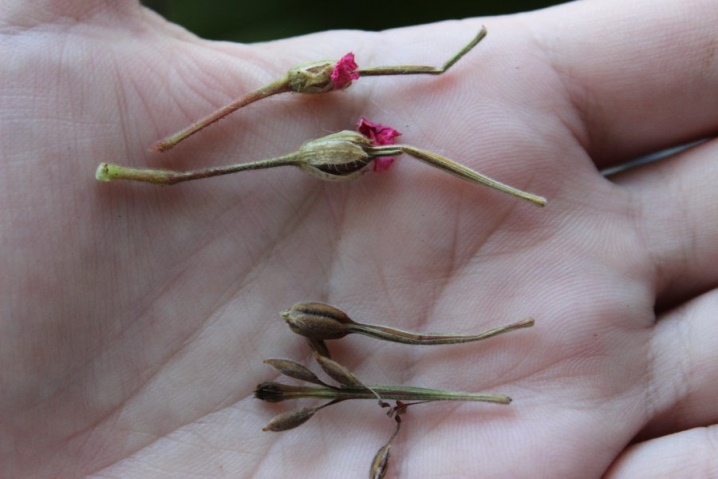
The benefits of seed propagation of geraniums are several factors.
- Ease and accessibility of the method.
- Seeds can be stored for a long time without prejudice to germination.
- The ability to get healthy plants without harmful viruses and genetic diseases.
- Young plants have a powerful root system, which has not undergone division and reproduction, which provides high qualities that adapt geranium to external environmental conditions.
- Geranium seeds bought in a specialty store are usually slightly more expensive than in questionable places on the street, but with them, confidence in the quality and variety of seeds is gained. In addition, they are most often already prepared for planting and do not require disinfection and pre-sowing soaking.
- The recommended timing for sowing geranium seeds is February and March. Then, by the middle of summer (in early July), geraniums will delight you with their abundant flowering.
- When sowing at other times of the year, it may take a little more effort and time. It is possible to increase daylight hours due to additional lighting with special phytolamps.
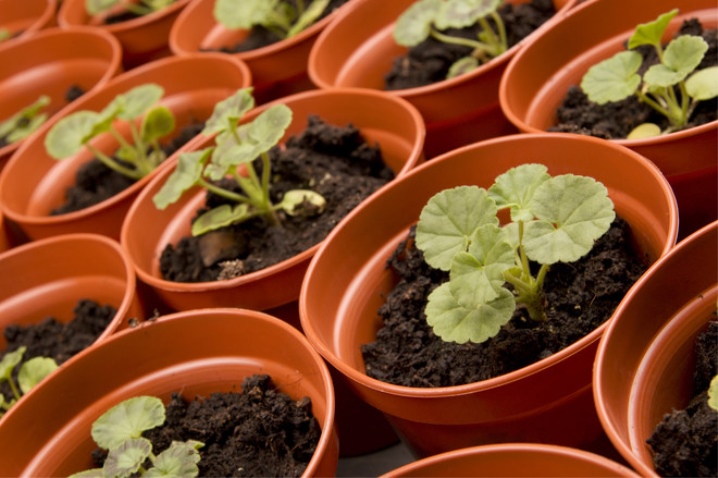
Consider step by step the process of seed propagation of geraniums.
- It is necessary to pay special attention when buying planting material - the seeds should be dense, dry, without blotches.
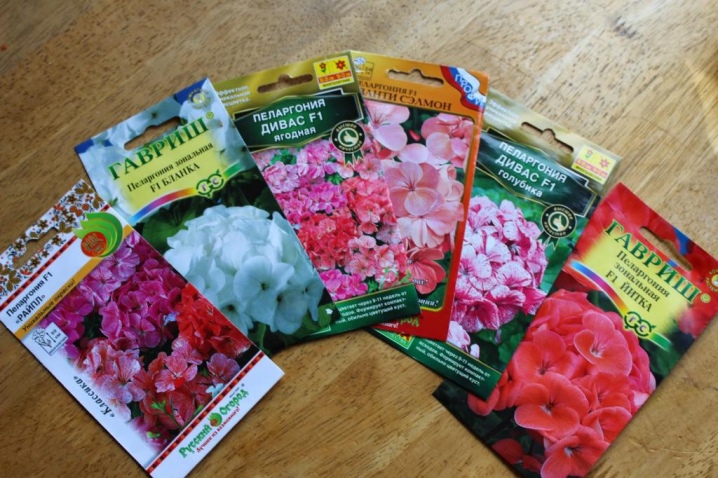
- Using dry or sprouted seeds for planting - each method has its own small pros and cons.
If you are not a lazy gardener and can spend some time soaking and disinfecting the planting material, then why not do this. The more energy spent on the plant, the more grateful it will be.
Disinfection for half an hour in a solution of potassium permanganate and preliminary soaking is all that is needed. When planted dry, the seeds will germinate a little later, on average, the germination time ranges from about 1.5-2 weeks.

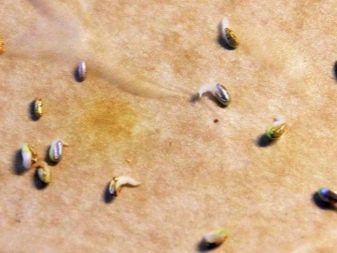
- To ensure favorable conditions for seed germination and geranium growth, it is advisable to use a nutrient substrate with a high content of mineral and organic substances. Light and loose soil should consist of equal parts of peat, leafy soil and coarse sand or vermiculite.
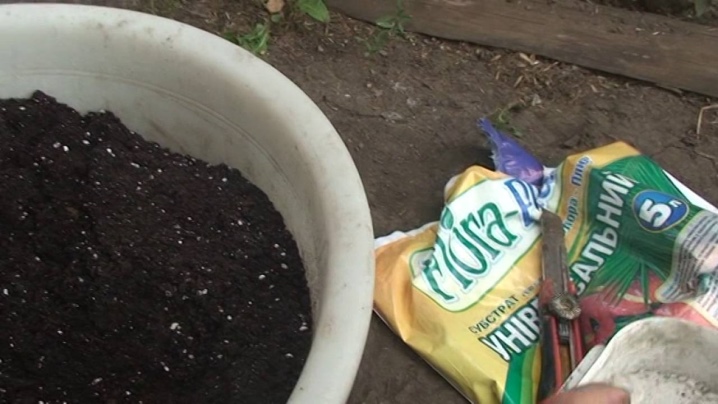
- For sowing geraniums, you can use any convenient containers with drainage holes that allow you to regulate the moisture content of the soil. They are filled with soil, disinfected with a weak solution of potassium permanganate.
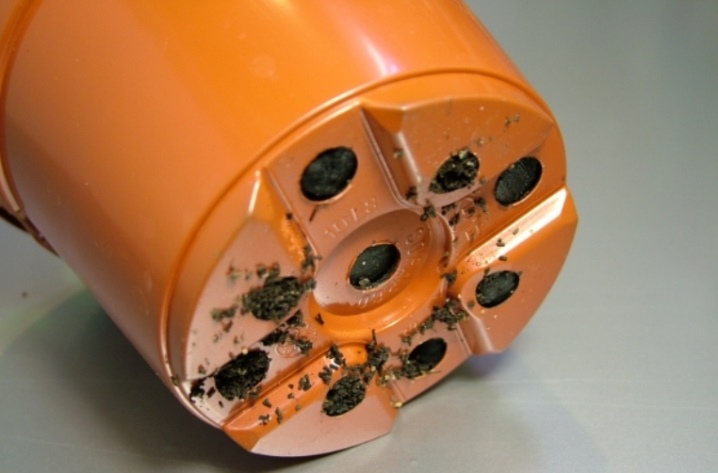
- The seeds are evenly spread over the surface and covered with a little earth. Crops are covered with glass or transparent film.
Ripening of seeds will occur much faster if the container is placed in a warm place.
After germination of seedlings, the film is removed.
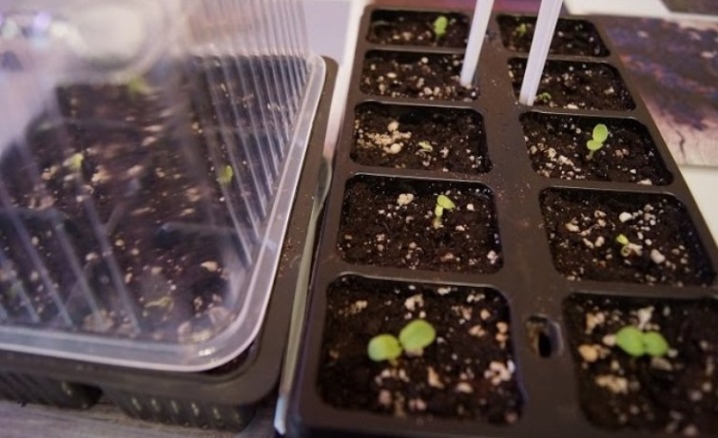
- For the first week, it is recommended to keep the pot with plants at low temperatures, ideally no more than +20 degrees Celsius, which will prevent the shoots from stretching. Then the seedlings are placed in a bright, warm place, regularly watered, sprayed, fertilized.
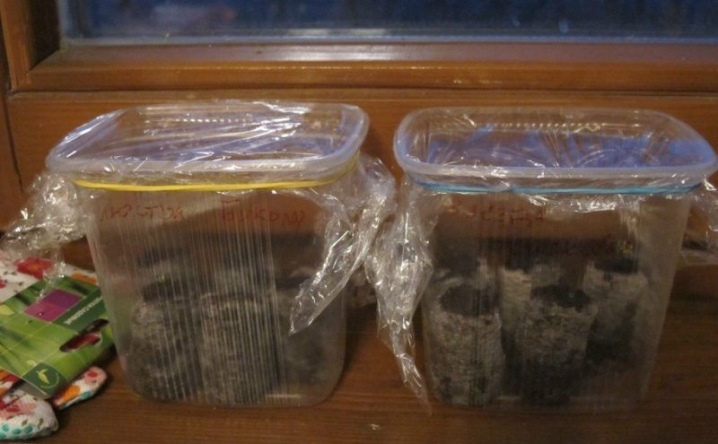
- As you grow up, it remains only to choose a suitable place and plant the resulting geranium seedlings.
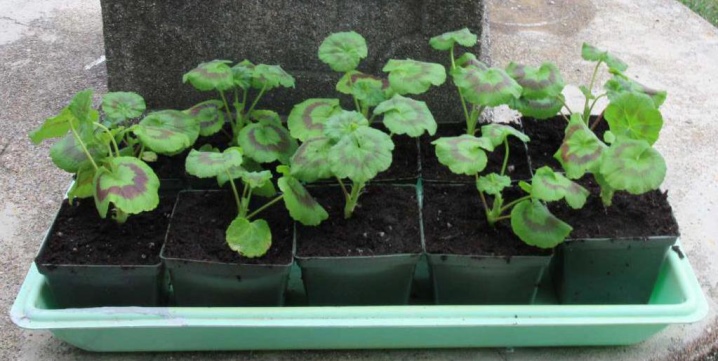
Further care
Depending on the timing of planting and the variety of geraniums, seedlings are planted in the ground at their summer cottage at the age of 2-3 months. It is necessary to maintain a distance of about 40-50 cm between the holes.
It is recommended to shed holes for planting grown seedlings with warm water with complex mineral fertilizers.
With careful transplantation and protection of young geranium bushes from the active sun, drafts, possible frost, the plants will have no problems to root and bloom throughout the summer. Further care is practically no different from caring for other garden flowers.
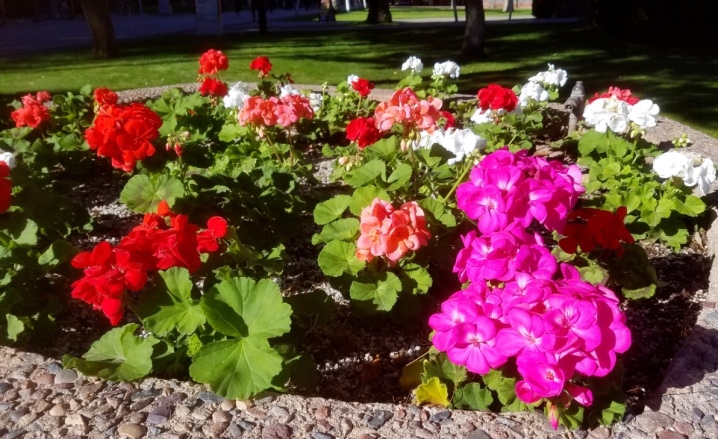
Possible problems
We list some of the problems that are possible when growing geraniums and their reproduction, and methods of dealing with them.
- If the temperature is insufficient, the seeds freeze and germinate later or, in general, may not germinate.

- Without sufficient daylight and fluorescent lighting, geranium sprouts stretch out, become thin like blades of grass, which negatively affects their viability.
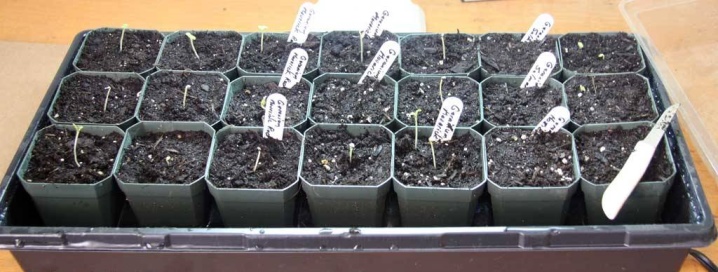
- Improper watering can destroy a young plant. With excessive watering or stagnant water, a disease develops, from which you can lose all plantings. Moderate but regular watering, drainage holes in the planting container and a layer of fine expanded clay at the bottom will help to avoid the appearance of a black leg.
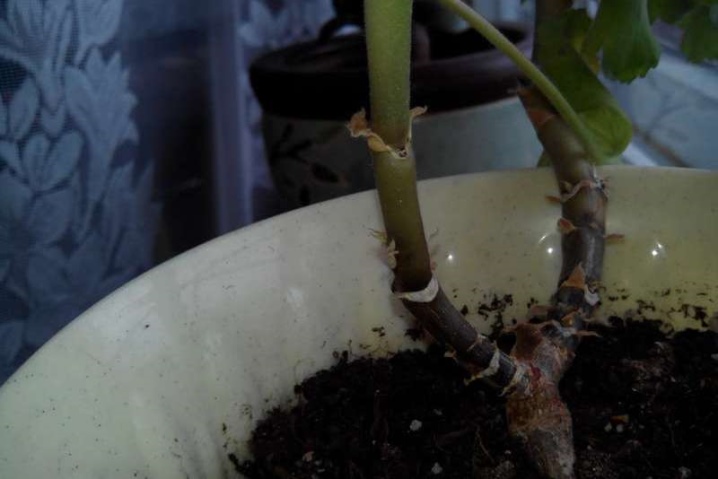
- Geranium does not bloom with an excess of fertilizers, high temperatures above +30 degrees Celsius, and lack of moisture.
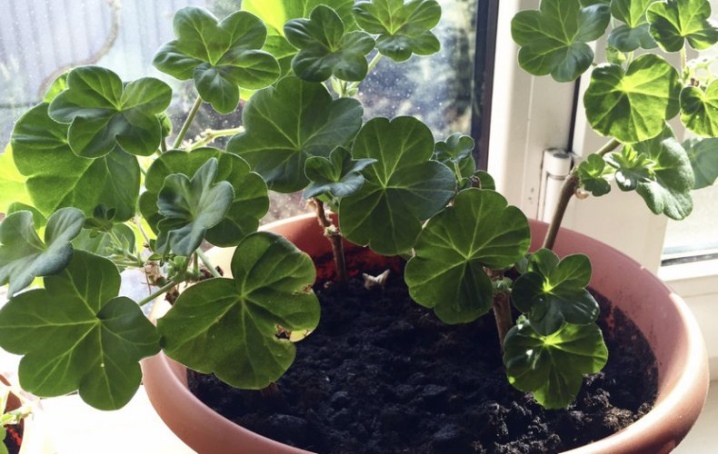
- Possible fungal diseases are manifested by spots of various sizes on the leaves, their yellowing, lethargy and rotting of the stem. Stem or root rot is caused by fungi that live in the ground, so it is strongly recommended that preventive disinfection be carried out when cutting and planting seedlings in the ground.
Regular watering, drainage and loosening of the soil, destruction of plant debris on the site - these measures will prevent many diseases.
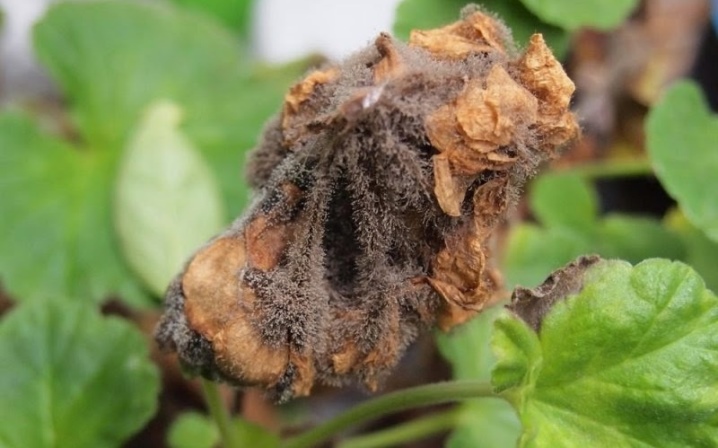
- A weakened plant with deformed or wrinkled leaves signals an existing danger - pests (mites, aphids, whiteflies). Larvae and adult insects injure plants by sucking juices from the leaves, buds and stems of the plant. Geraniums captured by pests are slowly dying.
Active rescue actions: the destruction of the insects themselves and damaged areas of the plant, treatment with insecticidal preparations.
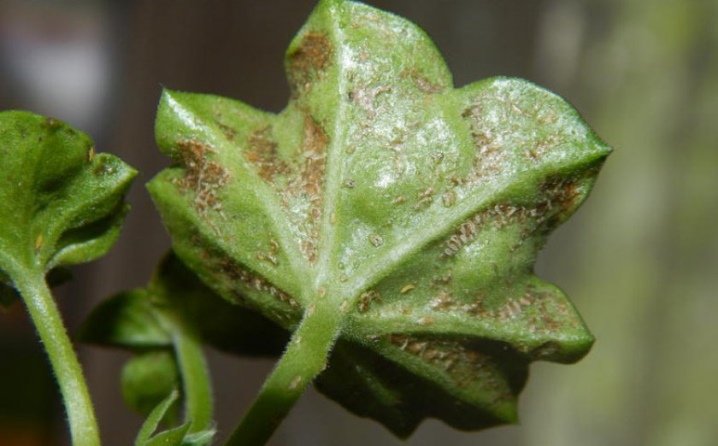
- The lower leaves turn yellow and die off - most likely, geranium suffers from dry air, lack of moisture or minerals. When the leaves turn yellow throughout the plant, these are signs of a bacterial disease that must be fought.
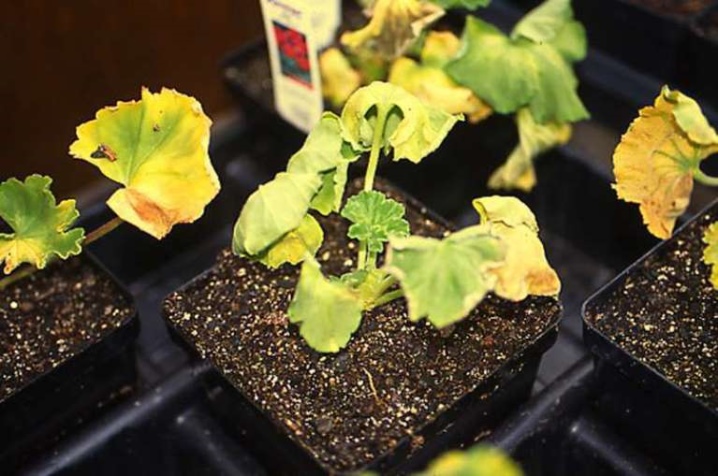
- The plant grows poorly, does not color, does not develop. Most likely, this is the result of a combination of unfavorable conditions, possibly an unsuitable earthen substrate and planting. If there is a lack of nitrogen, inappropriate acidity or soil contamination, it is recommended to transplant the plant to a more suitable place.
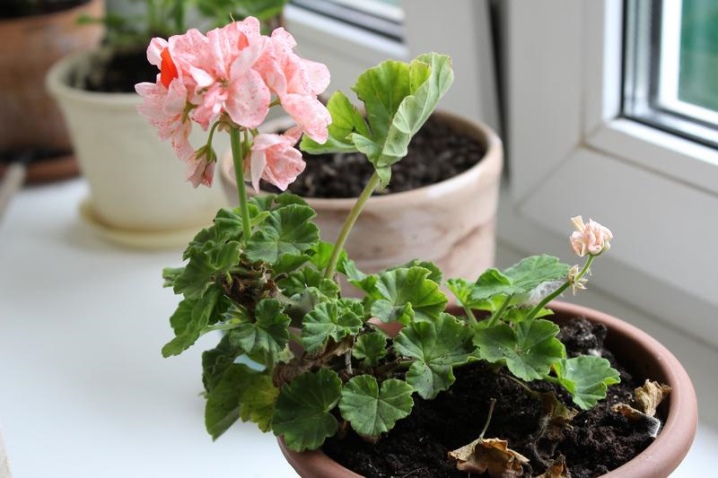
In the next video, you will find tips for rooting varietal geraniums.







































































































The comment was sent successfully.